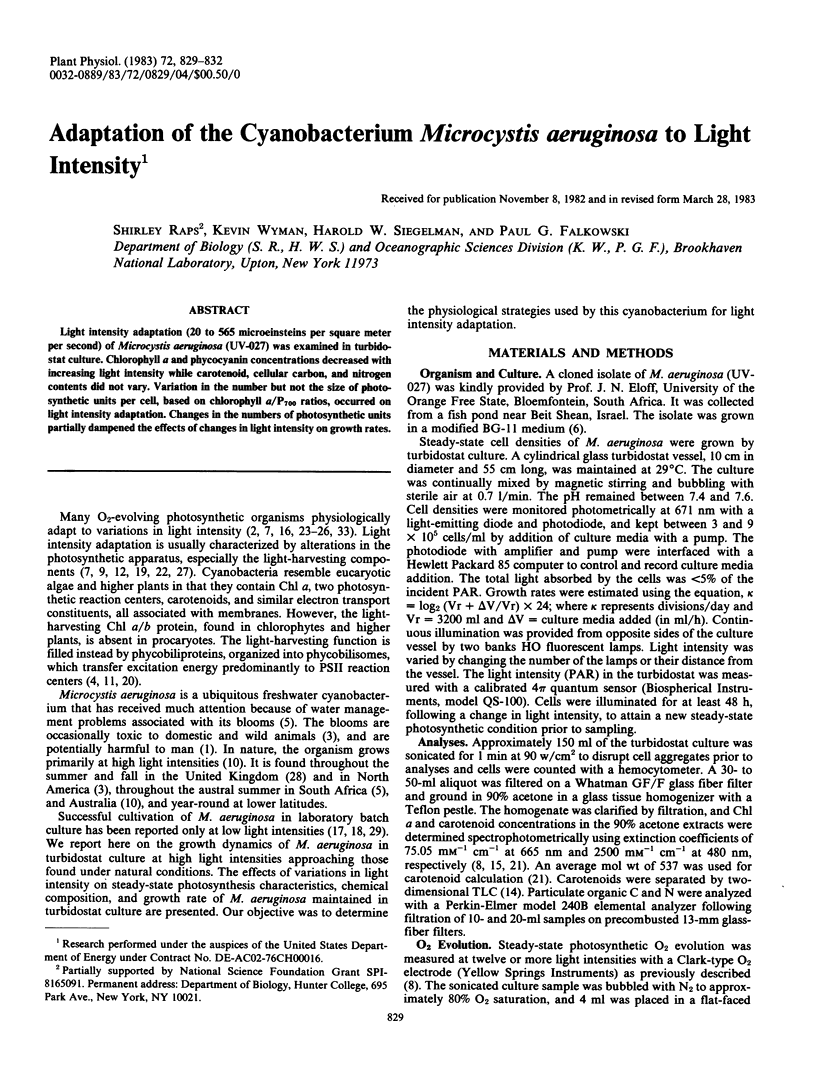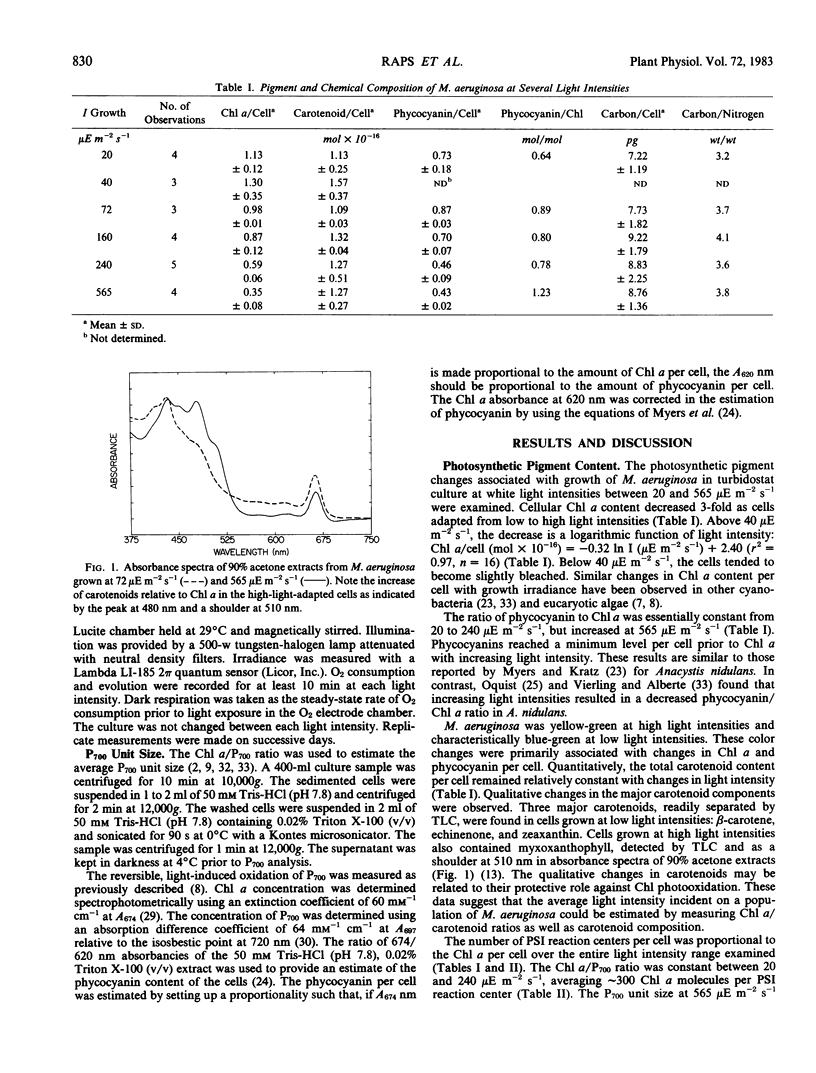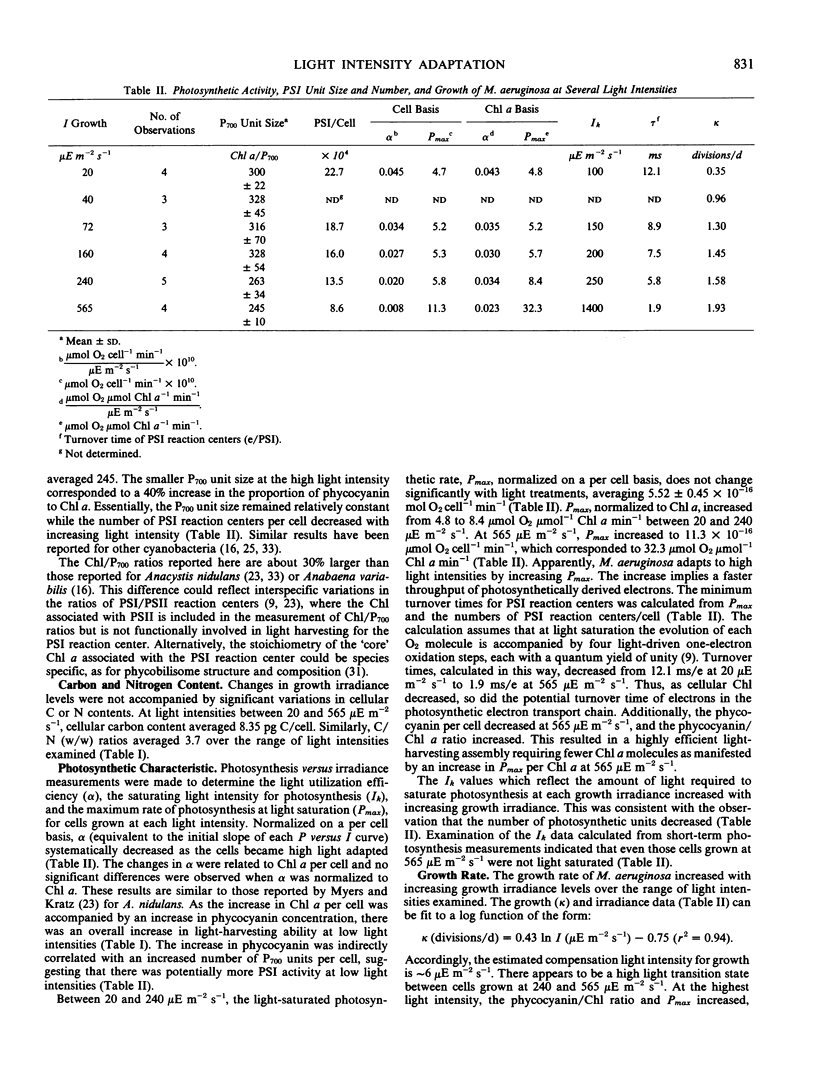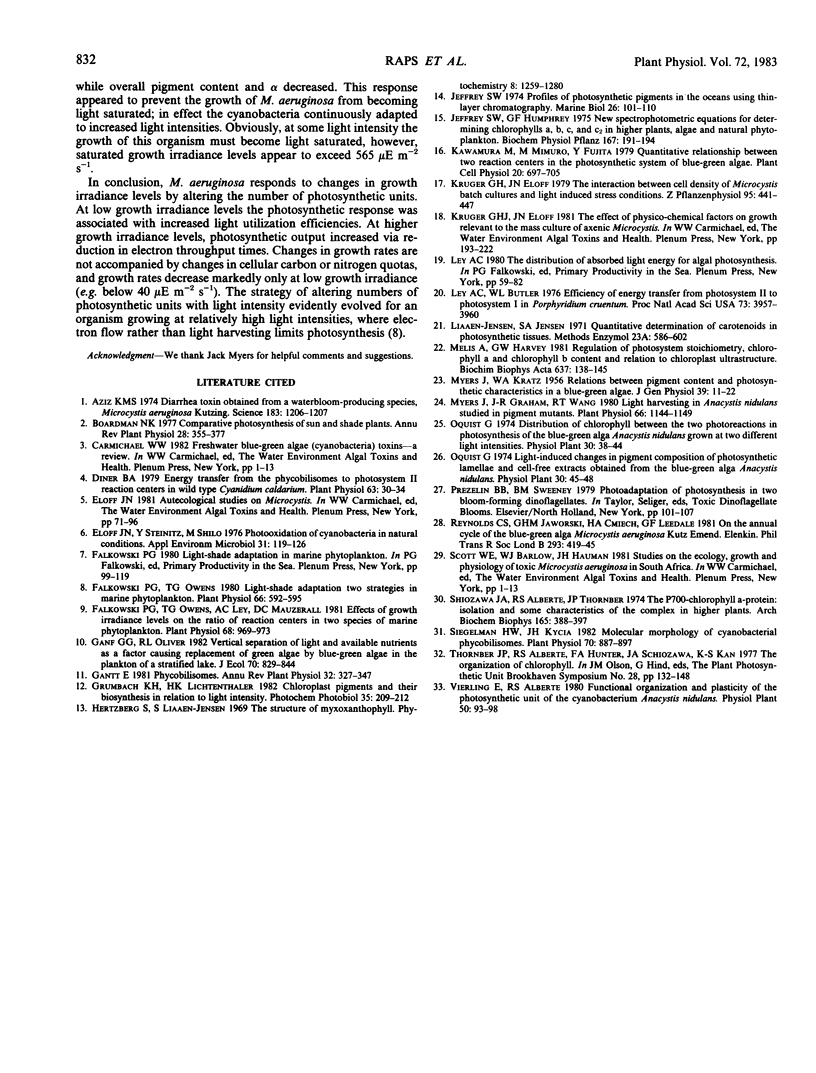Abstract
Light intensity adaptation (20 to 565 microeinsteins per square meter per second) of Microcystis aeruginosa (UV-027) was examined in turbidostat culture. Chlorophyll a and phycocyanin concentrations decreased with increasing light intensity while carotenoid, cellular carbon, and nitrogen contents did not vary. Variation in the number but not the size of photosynthetic units per cell, based on chlorophyll a/P700 ratios, occurred on light intensity adaptation. Changes in the numbers of photosynthetic units partially dampened the effects of changes in light intensity on growth rates.
Full text
PDF



Selected References
These references are in PubMed. This may not be the complete list of references from this article.
- Aziz K. M. Diarrhea toxin obtained from a waterbloom-producing species, Microcystis aeruginosA Kützing. Science. 1974 Mar;183(130):1206–1207. doi: 10.1126/science.183.4130.1206. [DOI] [PubMed] [Google Scholar]
- Diner B. A. Energy Transfer from the Phycobilisomes to Photosystem II Reaction Centers in Wild Type Cyanidium caldarium. Plant Physiol. 1979 Jan;63(1):30–34. doi: 10.1104/pp.63.1.30. [DOI] [PMC free article] [PubMed] [Google Scholar]
- Eloff J. N., Steinitz Y., Shilo M. Photooxidation of cyanobacteria in natural conditions. Appl Environ Microbiol. 1976 Jan;31(1):119–126. doi: 10.1128/aem.31.1.119-126.1976. [DOI] [PMC free article] [PubMed] [Google Scholar]
- Falkowski P. G., Owens T. G., Ley A. C., Mauzerall D. C. Effects of growth irradiance levels on the ratio of reaction centers in two species of marine phytoplankton. Plant Physiol. 1981 Oct;68(4):969–973. doi: 10.1104/pp.68.4.969. [DOI] [PMC free article] [PubMed] [Google Scholar]
- Falkowski P. G., Owens T. G. Light-Shade Adaptation : TWO STRATEGIES IN MARINE PHYTOPLANKTON. Plant Physiol. 1980 Oct;66(4):592–595. doi: 10.1104/pp.66.4.592. [DOI] [PMC free article] [PubMed] [Google Scholar]
- Ley A. C., Butler W. L. Efficiency of energy transfer from photosystem II to photosystem I in Porphyridium cruentum. Proc Natl Acad Sci U S A. 1976 Nov;73(11):3957–3960. doi: 10.1073/pnas.73.11.3957. [DOI] [PMC free article] [PubMed] [Google Scholar]
- MYERS J., KRATZ W. A. Relation between pigment content and photosynthetic characteristics in a blue-green algae. J Gen Physiol. 1955 Sep 20;39(1):11–22. doi: 10.1085/jgp.39.1.11. [DOI] [PMC free article] [PubMed] [Google Scholar]
- Myers J., Graham J. R., Wang R. T. Light Harvesting in Anacystis nidulans Studied in Pigment Mutants. Plant Physiol. 1980 Dec;66(6):1144–1149. doi: 10.1104/pp.66.6.1144. [DOI] [PMC free article] [PubMed] [Google Scholar]
- Shiozawa J. A., Alberte R. S., Thornber J. P. The P700-chlorophyll a-protein. Isolation and some characteristics of the complex in higher plants. Arch Biochem Biophys. 1974 Nov;165(1):388–397. doi: 10.1016/0003-9861(74)90177-5. [DOI] [PubMed] [Google Scholar]
- Siegelman H. W., Kycia J. H. Molecular morphology of cyanobacterial phycobilisomes. Plant Physiol. 1982 Sep;70(3):887–897. doi: 10.1104/pp.70.3.887. [DOI] [PMC free article] [PubMed] [Google Scholar]


